Interior and loudspeaker chassis
If you remove the complete active unit, you can take a first look at the body. The glued blocks are certainly supposed to improve the streak of the already quite rigid body, but one immediately notices that something had to be saved here, because one has to do without inner struts. Of course, the subwoofer will still work, but it is not completely stiffened.
In addition, a little too soft walls take a little power from the bass reflex, although this problem can still be coped with with the Hype 10 G2. Because one thing is also important: Always keep the price in mind…
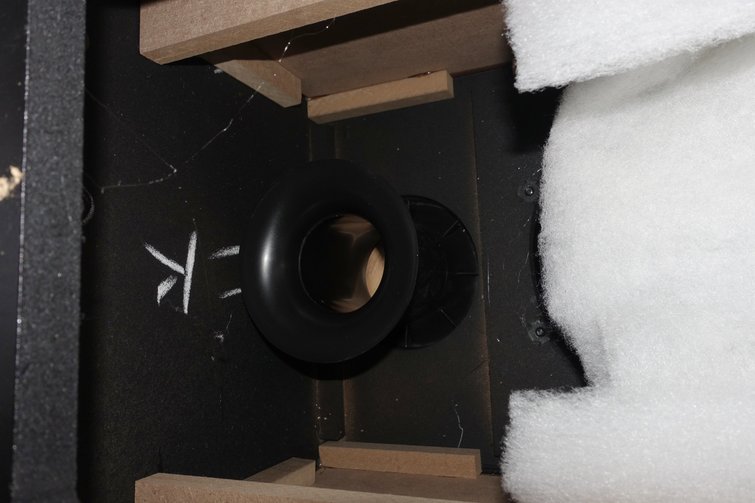
The glued bass reflex tube made of plastic shows thankfully to the front, but should have been a little longer. The tuning chosen for the subwoofer easily misses the manufacturer’s recommendations of the chassis.
This results in a performance peak at 50 to 55 Hz, which also quickly reveals to us that we have optimized mass-compliant towards the large bass drum. This is a pity, because a lot of potential is given away downwards – but more in the measurements.
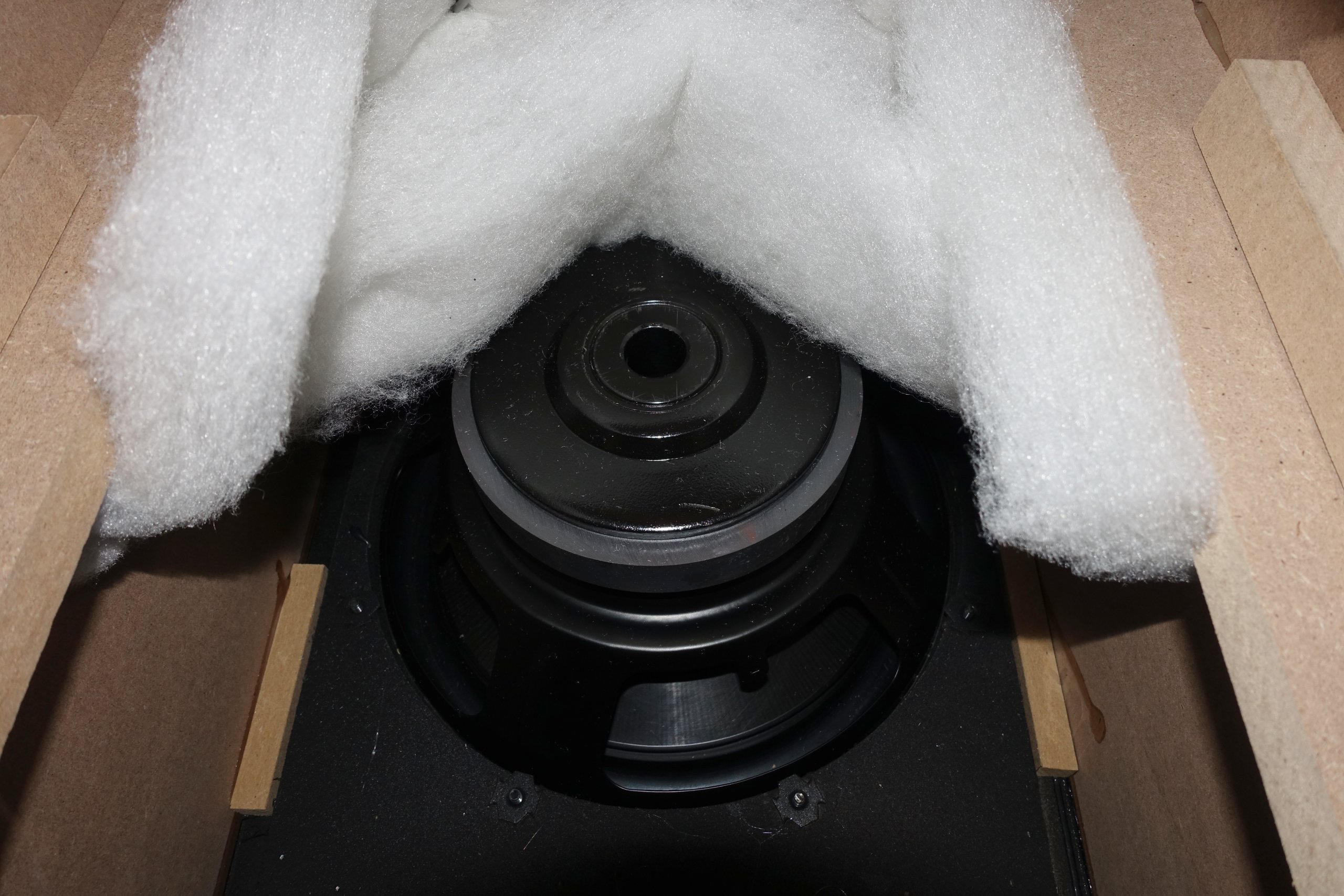
The box itself is hardly dampened. The low-to-be chassis (Mivoc SWW1) clad with light insulation is much simpler than the AW104 from Mivoc’s self-build range. It has a built-in diameter of 23.5 cm, an outer diameter of 26.3 cm and a mounting depth of 11.4 cm. The weight is still a handsome 3.4 kg. The manufacturer specifies 180 watts (R.M.S.) as the nominal power and 350 watts as the maximum power.
The membrane is made of polypropylene and is held in the basket by means of rubber seep. The oscillating coil has a diameter of five centimeters and an impedance of four ohms; the linear stroke of +/- 4.0 mm is also fine. The fact is, however, that the SWW11 is more aimed at larger housings, where the net volume should be 40 liters or more – with the Hype 10 G2, this recommended minimum volume of 40.8 liters is only slightly exceeded.
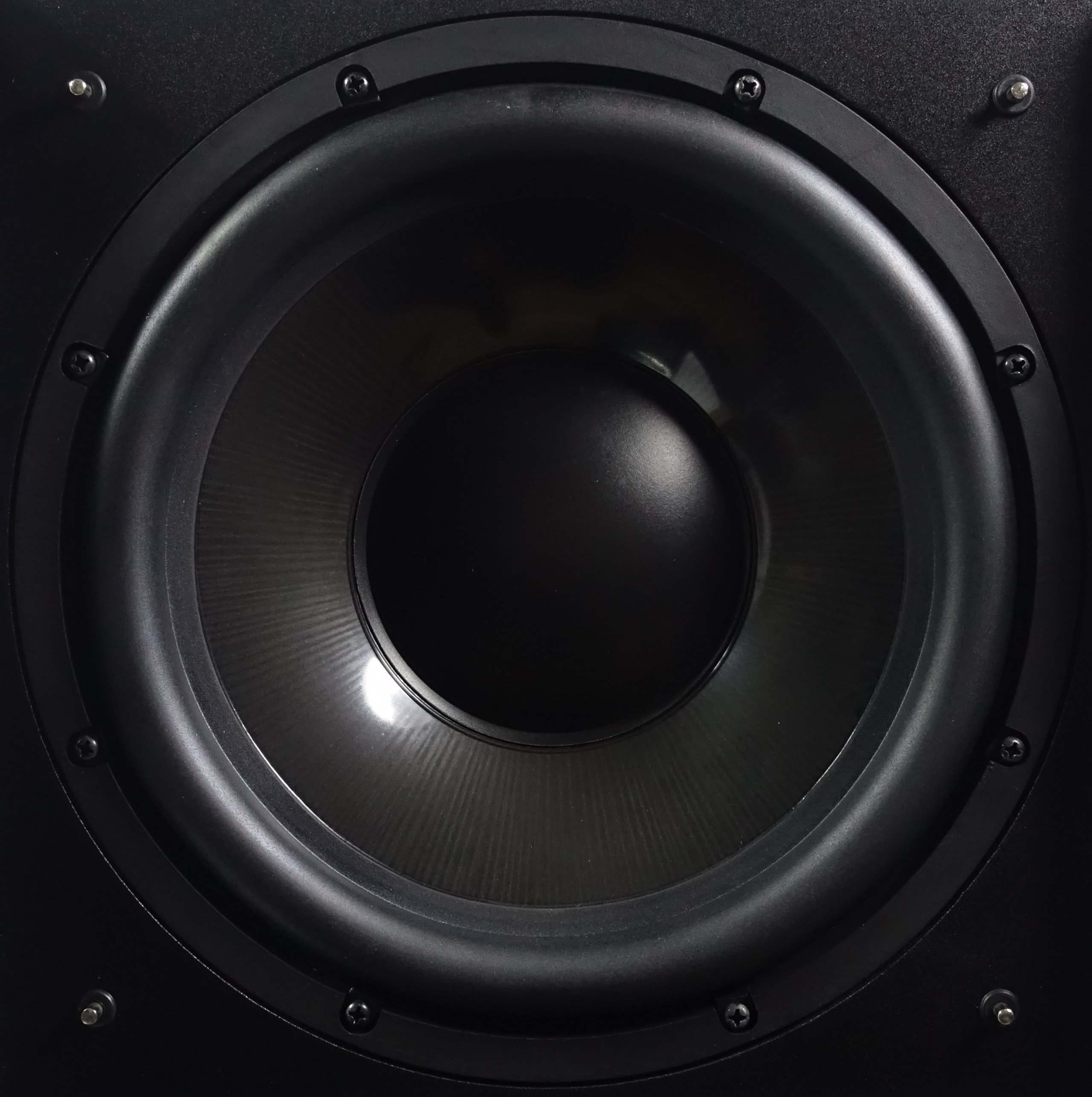
The tuning frequency (fb) is a frequency between 36 to 38 Hz and Mivoc indicates a bass increase of three decibels at 37 Hz, at least in the specs.
The chassis itself offers a sound pressure level (SPL) of up to 90 dB, which is fine. The upper frequency of 600 Hz is rather incidental here, because you will never need this range anyway.
Amplifier technology
On the mounting plate of the active unit there is an analog preamplifier board with inputs and control options, wherein the controller for the crossover frequency is designed as a simple RC link (low pass) second order. The control range is always at or more than 50 Hertz and lowers all frequencies above 50 hertz, depending on the position. It is therefore not possible to shift the transition frequency, but only a frequency-dependent level adjustment (low pass). We have also measured this in detail later.
Mivoc also uses a simple Subsonic filter (HPF), which already reaches just below 30 Hz to relieve the subwoofer and especially the power amplifier and achieve a slightly drier sound. However, this also means that the lower limit frequency of 20 Hz in the date sheet is waste, as we will see later.
Since you ultimately have to expend the more energy, the deeper a frequency to be reproduced, such a trick is not only useful, but usually also acoustically beneficial for the user. In the end, the 20 Hz are only an air deglagement in the room, which is hardly or no longer audible when you are not exactly elephant. But we would have liked the filter to be a little deeper.
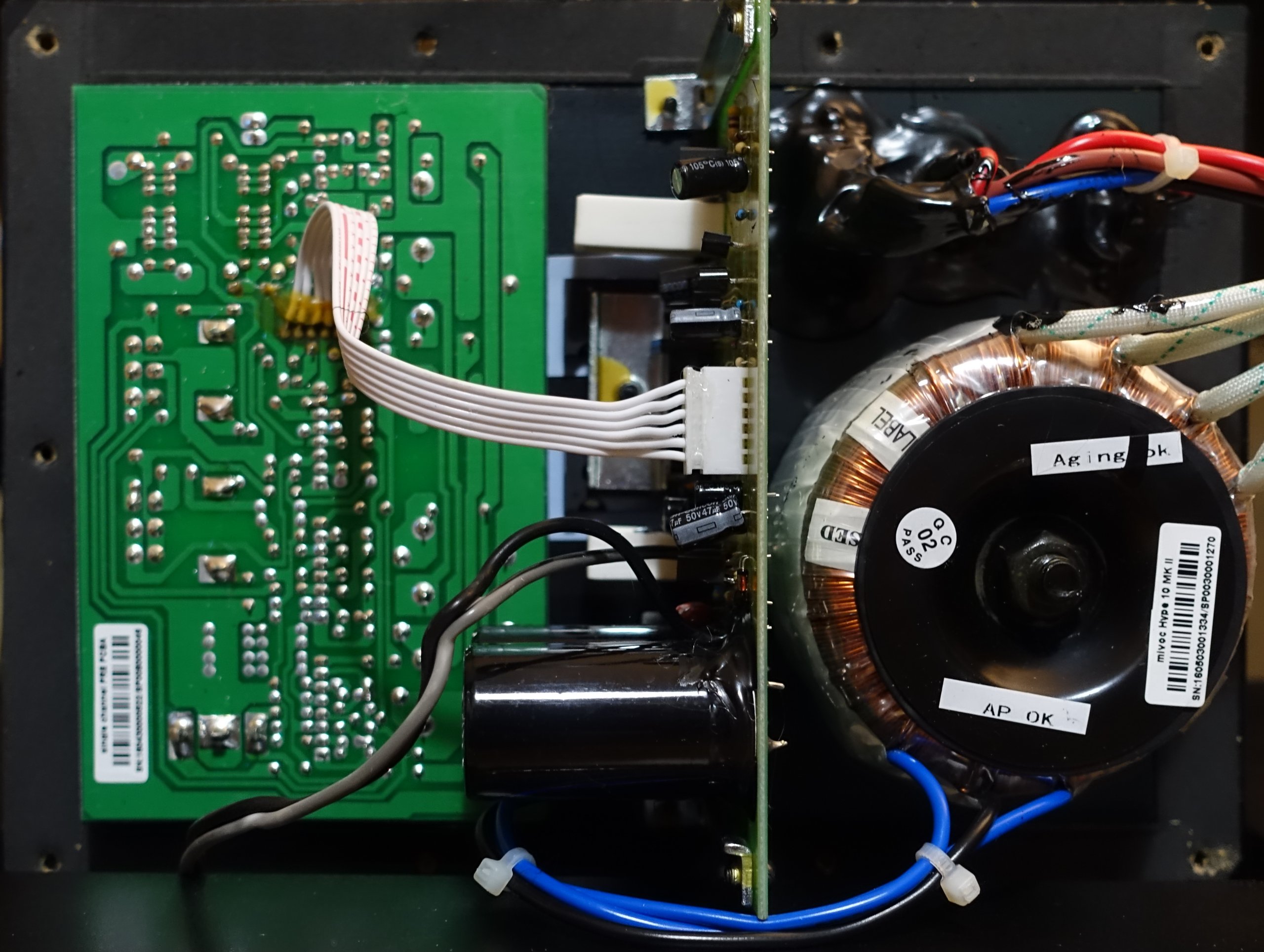
The power supply relies on a toroidal transformer, which is specified with a rated power of 90 watts. And after we already noticed that the marketing is cheating on the frequency range, we immediately became audible again. In the data sheet, the manufacturer specifies 120 watts of sine as the output power, which the power supply definitely cannot supply. On the homepage you can also read about 120 watts R.M.S., which can mean everything and nothing.

That’s why we were curious and simply measured: The mono-complementary stage – consisting of a pair with a TIP36C (PNP) and a TIP35C (NPN) in counter-stroke mode – creates a sine power of a maximum of 75 to 78 watts in this circuit, whereby the pulse power thanks to the rather “soft” power supply (high capacities) can already be above 80 watts for a short time.
However, more is not possible as long as we are aiming for an acceptable distortion factor, which we have still considered subjectively as a good limit value for us. However, the advertised 120 watts are the result of a somewhat over-optimistic PR and definitely do not take place in reality – especially since the two transistors are only certified for a maximum power dissipation of 125 watts and the cooling probably does not require any major more than that.
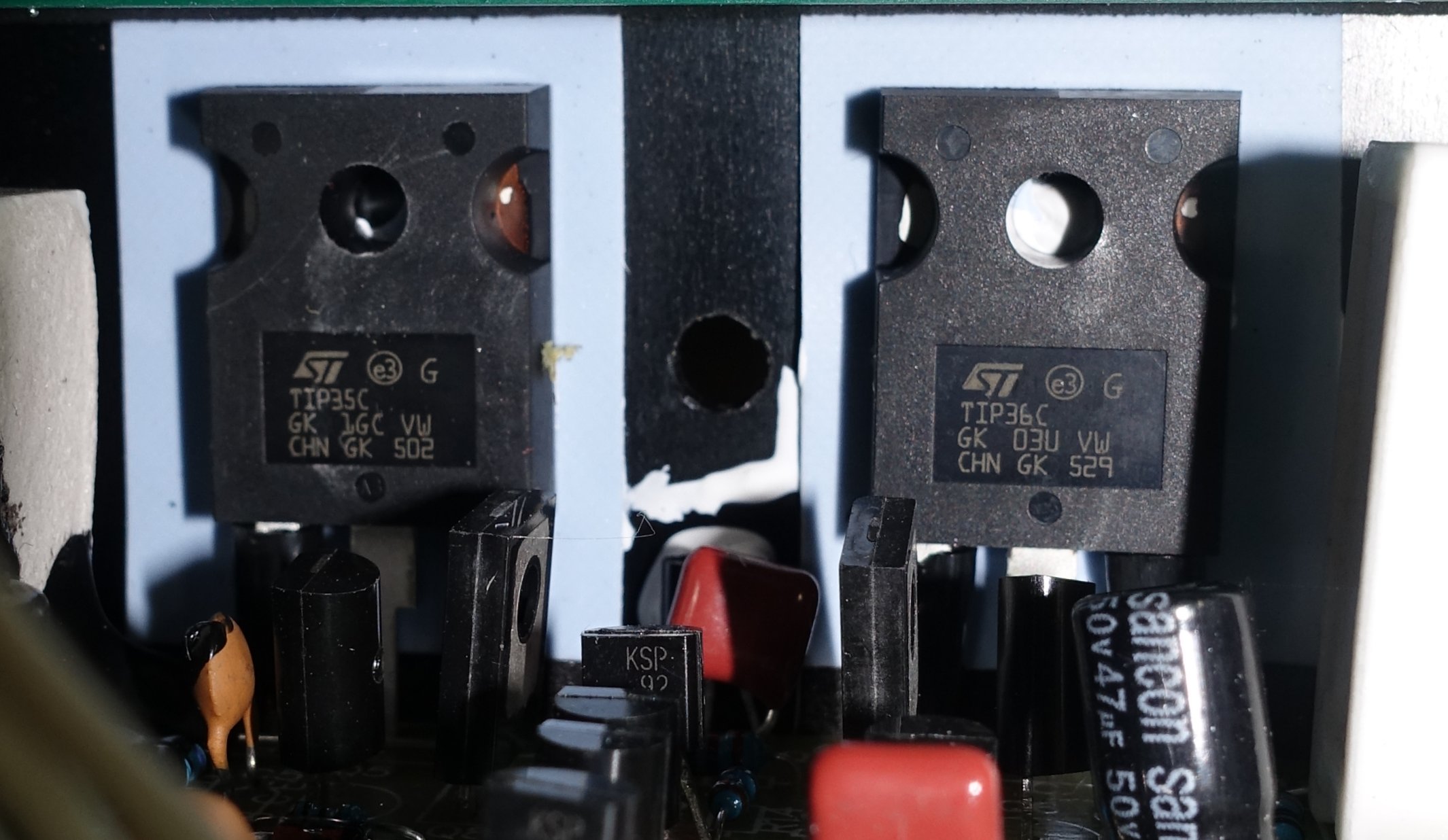
Similar designed amplifier modules as the in-house AV80, which can also be purchased as kits, are also more in line with the 75- to 80-watt class.
Despite this criticism of the marketing content of the provider, it is fair to admit that a home-build in this price range would hardly have come cheaper and improved, which clearly speaks for the Mivoc Hype 10 G2 as a good price-performance offer.
But enough of the preliminary consideration – let’s look at what the measurements in our acoustic room reveal.


































Kommentieren